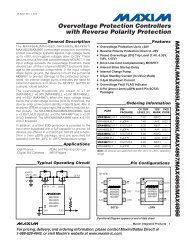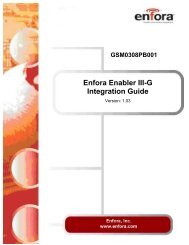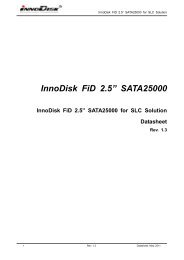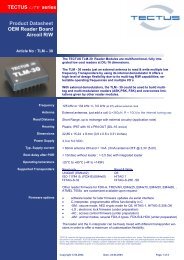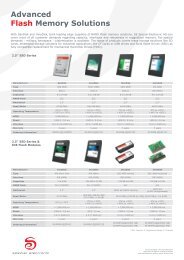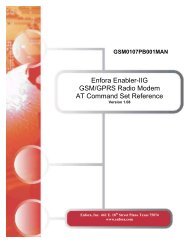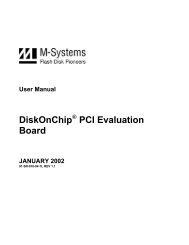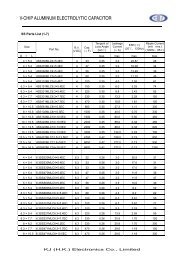AT+i Programmer's Manual - SE Spezial-Electronic AG
AT+i Programmer's Manual - SE Spezial-Electronic AG
AT+i Programmer's Manual - SE Spezial-Electronic AG
You also want an ePaper? Increase the reach of your titles
YUMPU automatically turns print PDFs into web optimized ePapers that Google loves.
32 Remote <strong>AT+i</strong> Service<br />
32.1 Introduction<br />
Remote <strong>AT+i</strong> Service<br />
The LATI parameter allows configuring iChip to maintain a communication channel that<br />
supports interacting with iChip from a remote location using the <strong>AT+i</strong> command set as if<br />
the commands are administered through the local serial port. When LATI is set to a nonzero<br />
value, iChip opens a TCP listening socket on port . In a dial-up<br />
environment, this occurs only after the PPP connection is established. This listening<br />
socket can be used to connect to iChip‘s remote <strong>AT+i</strong> service.<br />
32.2 Remote <strong>AT+i</strong> Commands<br />
When a remote client connects to iChip‘s LATI socket, iChip redirects the socket‘s data<br />
flow to the <strong>AT+i</strong> parser, in effect allowing the socket to take over the parser. Any data<br />
coming from the socket is processed by iChip as if it came from the host serial port and<br />
the replies are returned to the socket instead of being sent to the host serial port. iChip<br />
replies with an I/BUSY to commands coming from the host serial port, while the remote<br />
client is connected.<br />
An exception to this is the (+++) escape sequence. On detection of (+++) from the host<br />
serial port, iChip closes the remote connection and reboots.<br />
If iChip was in the process of performing some Internet activity initiated by the host at<br />
the time the remote client connected, iChip allows this activity to end and the final reply<br />
to reach the host before passing control over the parser to the remote client.<br />
32.3 Closing A Remote <strong>AT+i</strong> Session<br />
To close a remote <strong>AT+i</strong> session, the remote client can choose to issue <strong>AT+i</strong>DOWN via<br />
the socket. In response to this, iChip restarts. Only I/OK is returned over the socket<br />
before it is closed by iChip. Alternatively, the remote client can close the socket in order<br />
to disconnect, leaving iChip‘s Internet session as-is. In the latter case, iChip returns<br />
control over the parser to the local host port. The LATI listen remains active, available to<br />
service additional remote connections. After a LATI session is closed, the LSR (last<br />
session error) web parameter contains the value 096 to indicate that a LATI session has<br />
been disconnected.<br />
Note: (+++) sent over the LATI socket is not recognized as an escape sequence.<br />
32.4 Caveats and Restrictions<br />
When iChip in dial-up mode is in auto baud rate detection mode (after re-starting with<br />
BDRF=a or in response to the <strong>AT+i</strong>BDRA command), a remote <strong>AT+i</strong> session cannot<br />
be established, even if the LATI parameter contains a port value.<br />
In iChip LAN the remote <strong>AT+i</strong> service is available, even if iChip LAN is in auto baud<br />
rate detect mode. However, once the remote <strong>AT+i</strong> connection is established, iChip<br />
LAN will no longer be in auto baud rate mode and the host will be able to send the<br />
(+++) escape sequence only at 9600 baud, if it needs to close the remote session.



